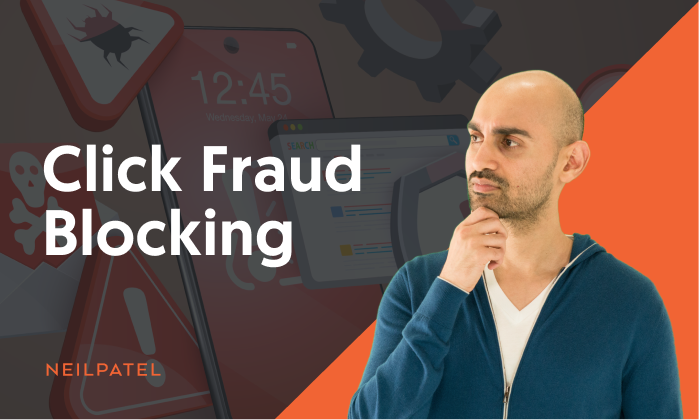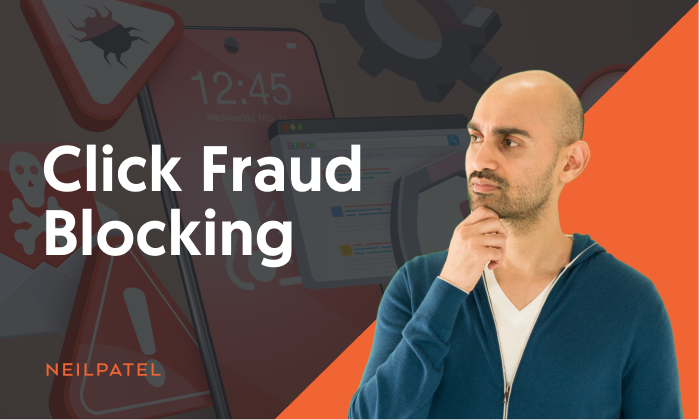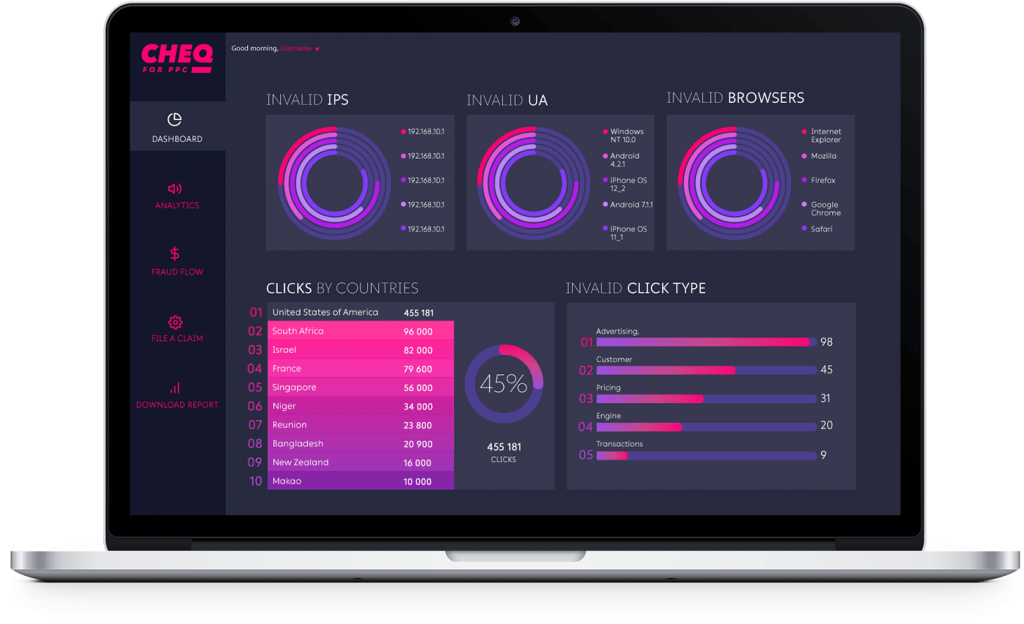Click Fraud Blocking: Your Search Ads Secret Weapon?

By Neil Patel
In the quest for more conversions, there’s an element most PPC advertisers overlook; invalid traffic—aka IVT, fake traffic, click fraud, or ad fraud.
You might have noticed the IVT column in your Google Analytics dashboard, although it isn’t displayed by default. And if you’ve ever searched for invalid traffic online, you have probably read Google or Facebook’s policies on the matter.
IVT is common. In fact, invalid ad traffic accounts for over ten percent of digital ad traffic.
Marketers often assume tech giants are in control of IVT. But are they? And how much actual invalid traffic really makes it through to your paid ads?
The Challenges of Digital Advertising
Although pay-per-click advertising is one of the most important elements of digital marketing, its reputation has taken a beating in recent years.
Marketers have watched CPC rise, an increase in competition, less-than-accurate tracking, and even noticed they’re paying for fake or fraudulent traffic that doesn’t drive results.
Plus, consumer groups have been campaigning for more privacy and control over our personal data.
So, where does this leave the average marketer?
First, some stats.
Between 40 and 60 percent of all internet traffic is from non-human sources. This includes bots, web crawlers, and other automated scripts. Despite the wide range, we can assume, on average, that around half of all web traffic is non-human.
It’s also estimated that ‘bad bot’ traffic outnumbers good bots, with bad bots conducting up to 25 percent of total internet activity. Bad bots can include spam bots, scalpers, or data harvesters, to the bots used for hacking, stealing logins, or committing ad fraud.
Added to this, marketers are also seeing their tracking and targeting capabilities changing as Google and Facebook adapt to the changing data laws around the world.
The growth of fake traffic combined with reduced targeting and analytics sounds like a recipe for a marketer’s headache.
But Facebook and Google are putting a stop to all this—right?
The Battle Against Fake Traffic
In 2021, the cost of click fraud and ad fraud was estimated to be around $42 billion.
The tech giants have long claimed their invalid traffic filters remove the worst of the bots and bad clicks.
And those IVT rates in Google Analytics might be encouraging.
Most marketers using Google Analytics see an IVT rate in the low single figures, somewhere between 2 to 8 percent.
But data from ClickCease shows an average of 14 percent of clicks on paid ads come from non-genuine sources, aka click fraud. Some industries even see click fraud levels way beyond this, with invalid clicks making up 60 percent of traffic.
Why the discrepancy? Surely the big ad platforms would want to put a stop to fake traffic?
The truth is, it’s complicated.
On the one hand, yes: Google, Facebook, and Microsoft do want to put a stop to fake traffic and protect their advertisers. After all, advertising revenue is by far the biggest earner for all of …read more
Source:: Kiss Metrics Blog








